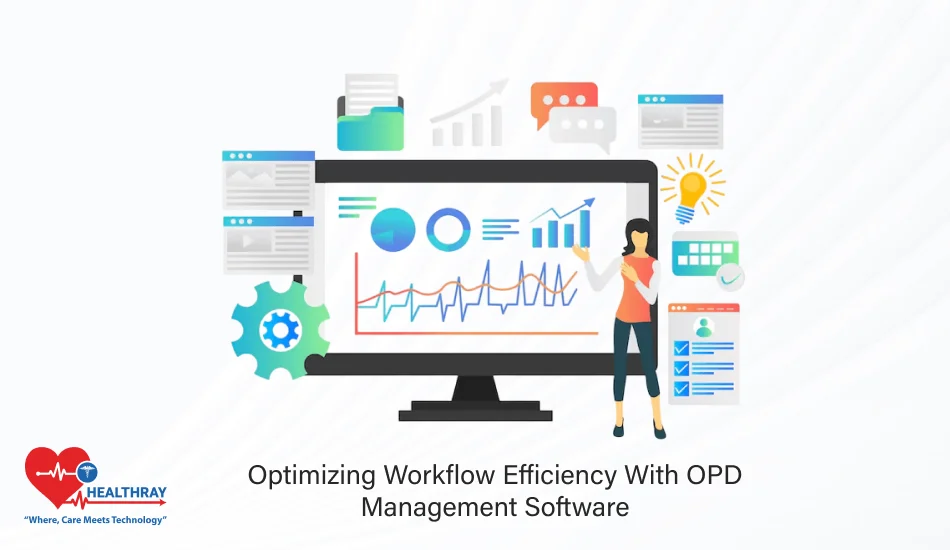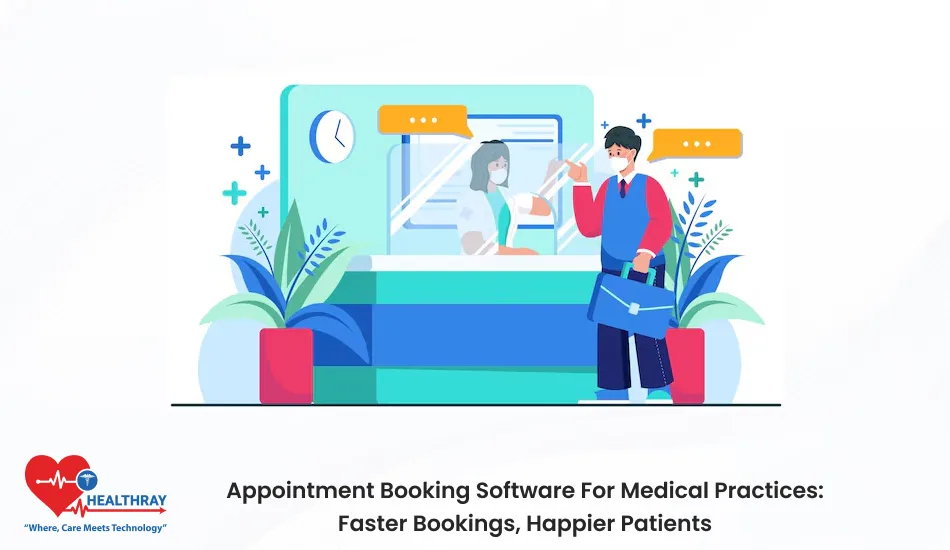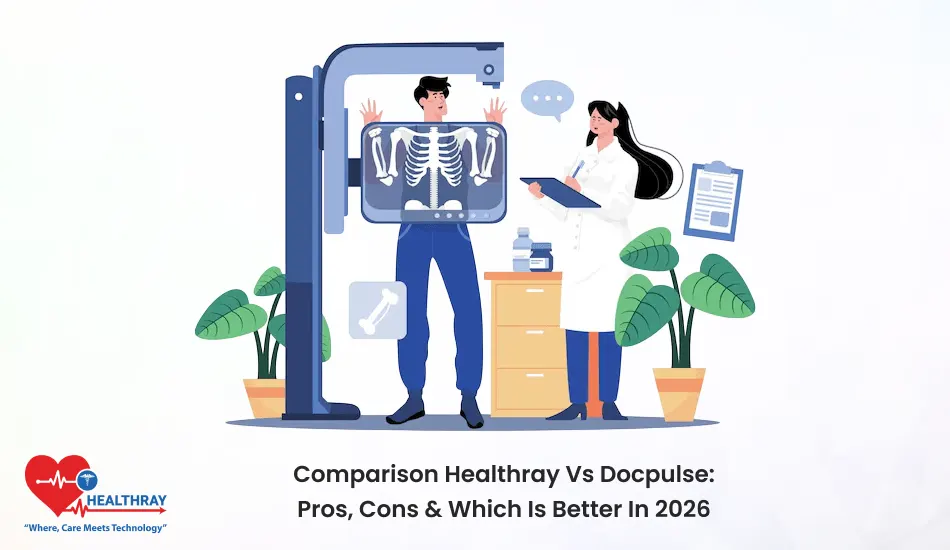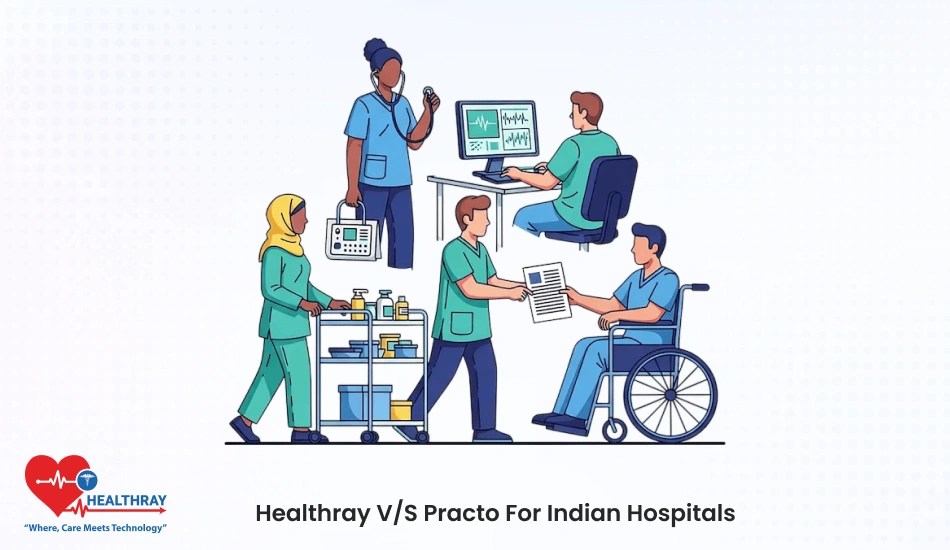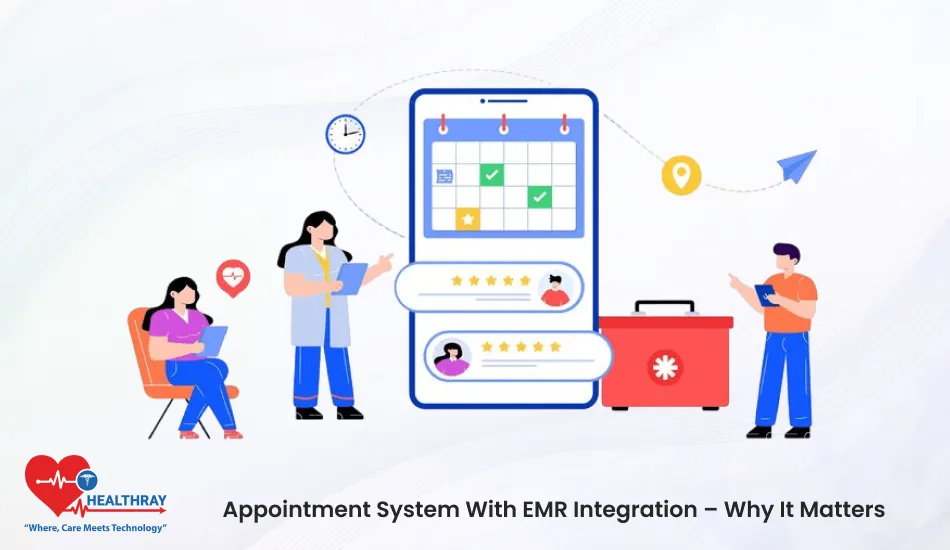To run an OPD, organisms for establishment, in day-to-day freak-out. There are appointments to be scheduled, health records to be processed and maintained, bills to be processed and made, and many other systems that seem to want administrative work. Above everything, this eats into the time dedicated to the real thing that matters in healthcare caring for patients.
OPD management software is a solution that aims to help streamline the process, thus relieving institutions of the burden while increasing efficiency. So what really makes this software most useful? What hurdles did it clear in addressing the hospital administration, doctors, and clinic manager’s unique needs?
Come with us to find out. We will go through the benefits, key features, and maybe implementation of OPD management software that make it an indispensable tool for modern healthcare. Let us show you how this technology can transform your administrative burdens to the benefit of an enhanced patient experience.
Key Features of OPD Management Software
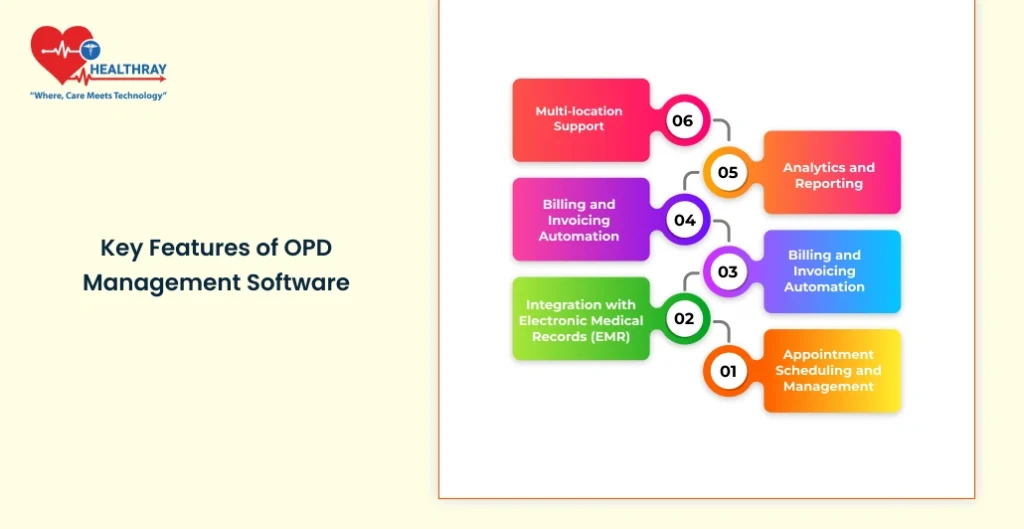
Efficiency is the name of the game when it comes to running outpatient departments. OPD management software congregates a host of features and functionalities to enhance administration and remove duplicate processes. The standout features make it irreplaceable:
Appointment Scheduling and Management
Paper record-based tracking of patient appointments is fraught with risks. Double booking, missed slots, and dissatisfied patients are common occurrences. OPD management software automates the scheduling; it uses real-time availability updates, patient reminders, and staff reminders; rescheduling can be accomplished with a few clicks.
Integration with Electronic Medical Records (EMR)
Patient record access during known contact moments can mean a great deal towards the provision of excellent care. OPD management software works well with EMR systems, whereby healthcare professionals may obtain patient histories, lab reports, and prescriptions with just a few clicks.
Billing and Invoicing Automation
Given the busy environment of hospital OPDs, managing finances is one important and sometimes often another topic. These automated systems cater for correct invoicing, ensure fast payments once the bills are generated, and potato chips slow down processes. Many software applications provide insurance claims management, saving time and reducing errors.
Patient Communication Tools
Trust and adherence to treatment depend wholly on good communication. OPD software gives lots of utilities to assist patient communication, including SMS or email notifications, appointment reminders, and feedback collection programs that keep the patient informed and involved.
Analytics and Reporting
With respect to OPD operations, it allows the managers’ understanding of certain trends and bottlenecks so that they can make an informed decision. This inbuilt analytics and reporting allows administrators to watch their patient loads, pay attention to resource utilization, and check staff performance. This data allows for effective decision-making in planning improvements in facility services.
Multi-location Support
Operating multiple branches within hospitals and clinics is a very challenging task. OPD management software gives certain uniformity and coordination across all locations by giving centralized information for all locations.
These capabilities do not merely address operational inefficiencies; they create a smoother experience for both the providers and the patients. Let us now get a glimpse of what these special advantages of capabilities do bring about.
Benefits of Implementing OPD Software

OPD management software is way beyond just application facilitation it gives an entirely new meaning to the functioning of healthcare centers. This is how the software drives value for hospital administrators, doctors, and clinic managers:
Streamlined Operations and Reduced Administrative Burden
Manual operations such as scheduling, record-keeping, or billing can automatically be done through OPD management software. Hence less staff time is wasted due to manual errors, which in turn enhance continuous workflow and minimize backward reassessment.
Enhanced Patient Experience and Satisfaction
Patients find long waits and poor communication vilifying. OPD software optimizes appointment scheduling and sends reminders to the patients, which help reduce delays, keep the patient informed, and make them happier. Happy patients become loyal patients and will recommend your services to others.
Improved Data Accuracy and Accessibility
Mistakes in patient records could lead to critical mistakes in treatment. OPD software ensures that there is accuracy in entering data and centralizes patient data, thus making it easily available to authorized personnel. This enhances the level of service by reducing delays in patient assistance.
Better Resource Allocation
In order for efficient operations to occur, it is vital to know the flow of patients and whether staff is available. The analytics and reporting in the OPD software assist in identifying peak times and resource utilization. At this point, the information is appropriated for managers to correctly allocate staff and resources to efficient locations in a timely manner.
Time and Cost Savings
Now that the OPD software for activities such as billing is automated, it leaves the staff free to focus on much higher-value activities. At the same time, this saves time and reduces the unnecessary cost associated with errors, inefficiencies, and rework. Accurate billing and invoicing also help fix the financial side of operations.
Interoperability With Other Systems
Compatibility For HIS of Hospitals
Nowadays, every healthcare facility uses Hospital Information System (HIS) to manage departments, and OPD management is designed for easy coupling to HIS, thus enabling a bi-directional flow of information. In that manner, the data of patients, their billing information, and recorded appointments of the entire systems will be updated simultaneously.
Data Migration
Changing from a manual or very old digital system necessitates data migration to a new platform. Well, most OPD management software providers will have strong migration capabilities.
Challenge:
Consistency in service delivery and tracking operations proved a major challenge in a healthcare group spread over five locations.
Solution:
The OPD management software with multi-location centralized support for a group, and enabled them to keep a watch on every branch from one roof. The consortium provided shared access to patient records and resource allocation tools for uniform functioning.
Results:
25% improvement in resource utilization across locations.
Real-time reporting enhanced decision-making.
Patients responded positively to their experiences across different branches.
Brings Efficiency in Operations of Specialized Care Center
Challenge:
A specialized outpatient center offering physical therapy services faced difficulty in management of therapist schedules and tracking patient progress.
Solution:
OPD management software specific to therapy centers enabled custom schedules, tracking of patients’ progress, and integration with diagnostics.
Results:
Schedules of therapists became perfectly optimized without overbooking.
Patient outcomes were improved as all therapists accessed historical progress reports immediately.
Revenue increased by 15% due to the enhanced operational efficiencies.
These case studies show how the various features and benefits of OPD management software are found in different applications. The range typically includes everything from reduced wait time to greater accuracy in data. Indeed, this technology has proven itself in different healthcare
set-ups. Next up, we’re going to see how data security and compliance come into play in ensuring that a system protects patient trust and is compliant with law statutes.
Data security and Compliance: Safeguarding Piece of Patients’ Trust
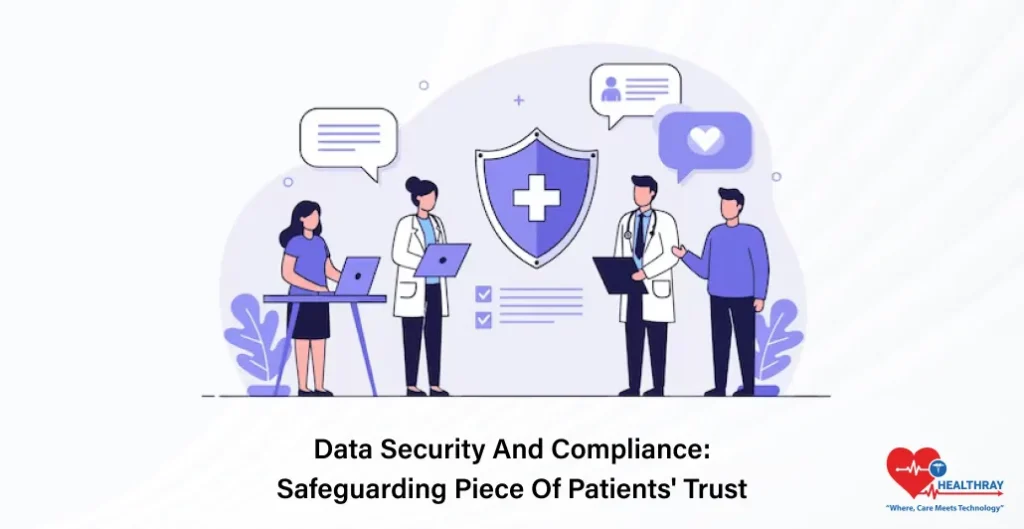
Data security is always holding the top post in the healthcare services patient, as information is highly sensitive and closely regulated by law. The OPD management software can incorporate provisions for compliance to data protection laws while securing the system from breaches. Let us see how such systems guarantee this:
Compliance with Healthcare Regulations
There are instances, such as the case of an OPD management system, of stringent regulations applicable in terms of healthcare practice, for example, HIPAA in the US or GDPR in the European Union. Such frameworks require that secure handling, storage, and transmission of patient data should be in place to guard individual privacy.
Data Encryption
Encryption of data is the process that enables the safe storing and transferring of patient records. Even when unauthorized access occurs, the encrypted data would remain unreadable without the correct decryption key, thus adding a robust layer of security.
Role-Based Access Control (RBAC)
Not all staff members will have a need to see or access the entire profile of patient data. Role-based access control guarantees visibility of specific information by specific personnel like administrative staff taking care of billing details while doctors access medical histories.
Audit Trails
Audit trails serve to know the healthcare facility that accessed or modified patient data and at what time. This feature not only strengthens accountability but also makes compliance reporting easy during audits.
Automatic Backups
Loss of data from system crashes or cyberattacks can cause severely crippling disruptions to healthcare. Automatic backup systems in OPD software save data in secured locations within prescribed intervals, ensuring quick recovery whenever needed.
Firewalls and MFA
Advanced firewalls and MFA protocols provide additional security for healthcare facilities. Unauthorized access is prevented by firewalls, while a verified user is able to log in using several authentication methods needed for MFA.
Vendor Assessment and Certifications
Reputed OPD management software vendors are likely to have certifications such as ISO 27001 or HITRUST, demonstrating their commitment to security standards. It is important that this vendor has a proven record of keeping data integrity.
Patient Consent Management
Patient programs must have modules that capture and manage consent from patients regarding their data use, especially for research or integration with third parties. This aims at keeping facilities open and complying with legal requirements.
By saving on data security and compliance, OPD management software earns patients’ trust and saves healthcare facilities from costly penalties. The next thing is to bring it down under the conclusion it sums up well the key messages and shines out on why investing in OPD software is a game-changer in the management of healthcare.
Conclusion
Managing outpatient departments comes with many tricky little problems: juggling an appointment schedule, trying to keep accurate patient records, among others. OPD management software addresses most of these issues and offers a complete solution. This then allows hospital administrators, doctors, and clinic managers to facilitate operations, improve patient care, and reduce administrative burdens.
Changing the patterns in healthcare facilities, the hospital management system automates the tedious, error-prone tasks which do not suffer integration issues with other programs and assures data integrity. Reducing wait times and improving financial account accuracy are some advantages of this software in the real-world cases proving the measurable improvement and benefits associated with the software.
Investing is not a matter of keeping up with the current times but very much so about putting patients and outcomes at a premium above everything else. This will be a new approach for those who manage a small clinic or a multi-location hospital using this tool to solve workflow challenges and focus on what matters: giving great care.
